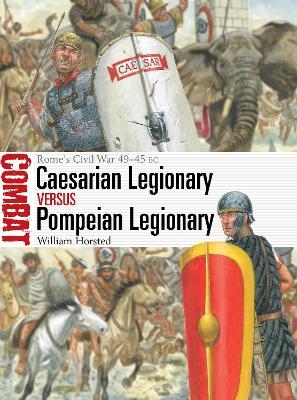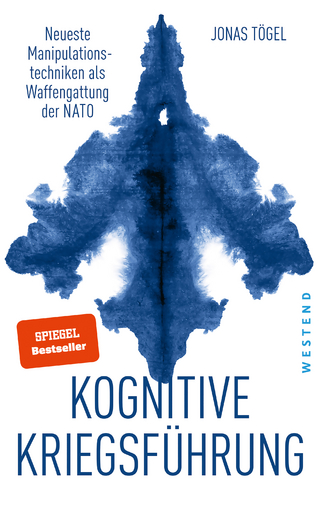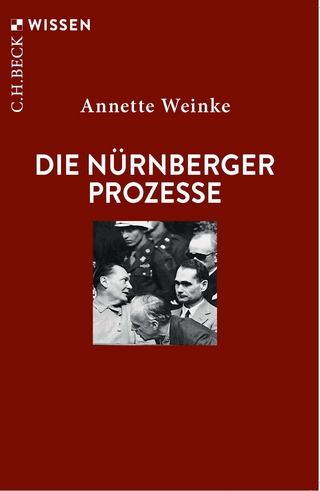
Caesarian Legionary vs Pompeian Legionary
Rome’s Civil War 49–45 BC
Seiten
2025
Osprey Publishing (Verlag)
978-1-4728-6704-9 (ISBN)
Osprey Publishing (Verlag)
978-1-4728-6704-9 (ISBN)
- Noch nicht erschienen (ca. Juli 2025)
- Versandkostenfrei innerhalb Deutschlands
- Auch auf Rechnung
- Verfügbarkeit in der Filiale vor Ort prüfen
- Artikel merken
A fully illustrated study of the troops fighting for Caesar and Pompey in three major battles of the Roman Civil War.
Triggered by the tensions surrounding Julius Caesar’s return to Rome from Gaul, the civil war that broke out in 49 BC convulsed the Roman world. Commanders and troops loyal to Gnaeus Pompeius Magnus, known as Pompey, confronted those following Caesar in a series of brutal battles across the Mediterranean, from Hispania to Greece.
William Horsted assesses the similarities and differences between the evolving Caesarian and Pompeian armies, which included not only Roman legions but also auxiliaries from Gaul, Numidia and elsewhere. Even after Pompey’s defeat at Pharsalus (48 BC) and his subsequent death in Egypt, the conflict continued, with Pompey’s relatives and followers continuing the fight until 45 BC. The two armies are examined in the context of three major clashes of the conflict: Dyrrachium (48 BC) in present-day Albania; Thapsus (46 BC) in modern Tunisia; and Munda (45 BC) in Spain. The text is complemented by specially commissioned colour artwork and mapping as well as archive photographs.
Triggered by the tensions surrounding Julius Caesar’s return to Rome from Gaul, the civil war that broke out in 49 BC convulsed the Roman world. Commanders and troops loyal to Gnaeus Pompeius Magnus, known as Pompey, confronted those following Caesar in a series of brutal battles across the Mediterranean, from Hispania to Greece.
William Horsted assesses the similarities and differences between the evolving Caesarian and Pompeian armies, which included not only Roman legions but also auxiliaries from Gaul, Numidia and elsewhere. Even after Pompey’s defeat at Pharsalus (48 BC) and his subsequent death in Egypt, the conflict continued, with Pompey’s relatives and followers continuing the fight until 45 BC. The two armies are examined in the context of three major clashes of the conflict: Dyrrachium (48 BC) in present-day Albania; Thapsus (46 BC) in modern Tunisia; and Munda (45 BC) in Spain. The text is complemented by specially commissioned colour artwork and mapping as well as archive photographs.
William Horsted studied Ancient History at the University of Bristol. He is the author of The Numidians 300 BC–AD 300 in Osprey's Men-at-Arms series and British Celtic Warrior vs Roman Soldier in the Combat series.
[subject to confirmation]
Introduction
The Opposing Sides
Dyrrachium, 48 BC
Thapsus, 46 BC
Munda, 45 BC
Analysis
Aftermath
Bibliography
Index
| Erscheint lt. Verlag | 17.7.2025 |
|---|---|
| Reihe/Serie | Combat |
| Illustrationen | Giuseppe Rava |
| Zusatzinfo | Colour artwork plates and maps; black & white and colour photographs and illustrations. |
| Sprache | englisch |
| Maße | 184 x 248 mm |
| Themenwelt | Kunst / Musik / Theater ► Fotokunst |
| Geisteswissenschaften ► Geschichte ► Regional- / Ländergeschichte | |
| Geschichte ► Teilgebiete der Geschichte ► Militärgeschichte | |
| Sozialwissenschaften ► Politik / Verwaltung | |
| ISBN-10 | 1-4728-6704-1 / 1472867041 |
| ISBN-13 | 978-1-4728-6704-9 / 9781472867049 |
| Zustand | Neuware |
| Haben Sie eine Frage zum Produkt? |
Mehr entdecken
aus dem Bereich
aus dem Bereich
neueste Manipulationstechniken als Waffengattung der NATO
Buch | Softcover (2023)
Westend (Verlag)
24,00 €
Deutschlands Schwäche in der Zeitenwende
Buch | Softcover (2023)
C.H.Beck (Verlag)
18,00 €


